NS Harsha – Reclaiming the Inner Space
Filmed in 2019, the renowned Indian artist discusses the ideas and process behind his major installation Reclaiming the Inner Space, which premiered at the 21st Sydney Biennale in 2018 and formed part of his exhibition of new and recent works at the gallery.
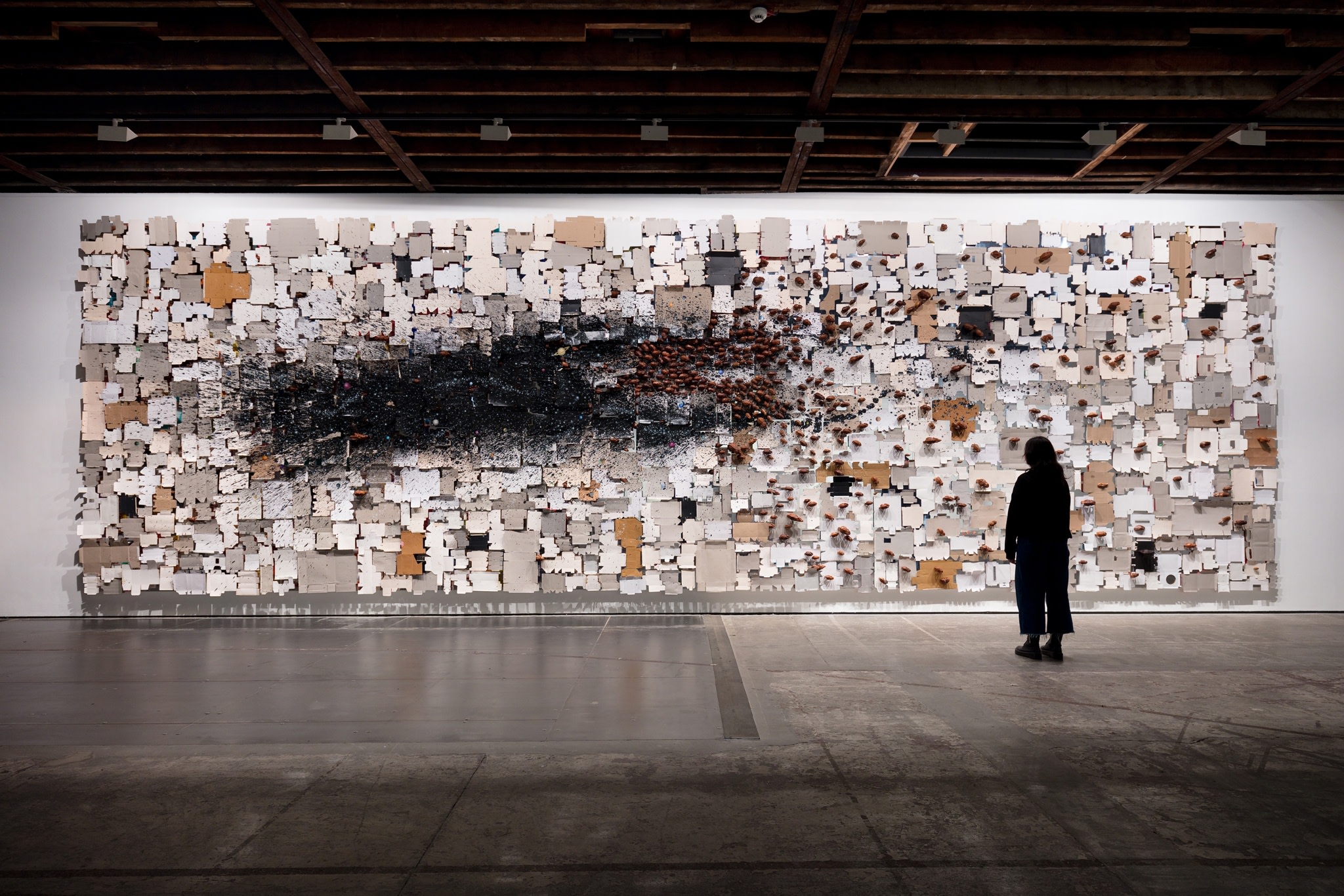
A focal point of the exhibition was the major work Reclaiming the Inner Space, 2017 (pictured below). This three-dimensional, wall-mounted work features a ‘herd’ of approximately 1400 hand-carved wooden elephants that appear to roam a plain made from recycled cardboard packaging, flattened and attached to acrylic mirror. While the elephants refer to the ornaments that one might find in Indian souvenir shops, they also recall the elephant processions of Dasara festivities in Mysore, the artist’s home, and elsewhere, celebrated at the end of Navratri each year.
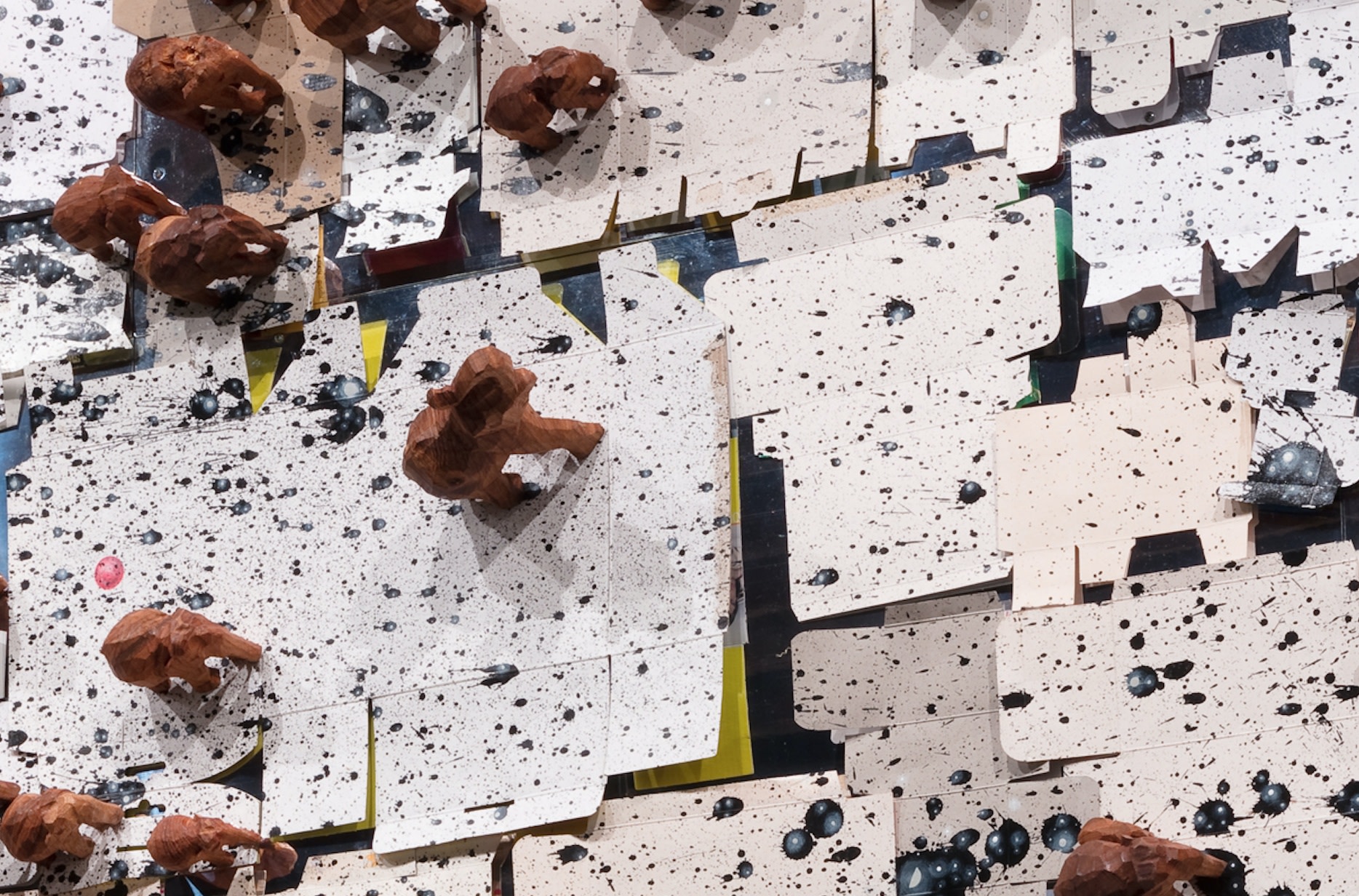
Collected from various sources, including recycling facilities and the artist’s friends and family, the cardboard packaging is attached face-down to the mirror, its printed graphics and logos readable only, up close, in reflection. The unprinted sides of the packaging, meanwhile, have been partially covered with an explosive trail of dark paint which Harsha has embellished with a detailed constellation of stars and planets.
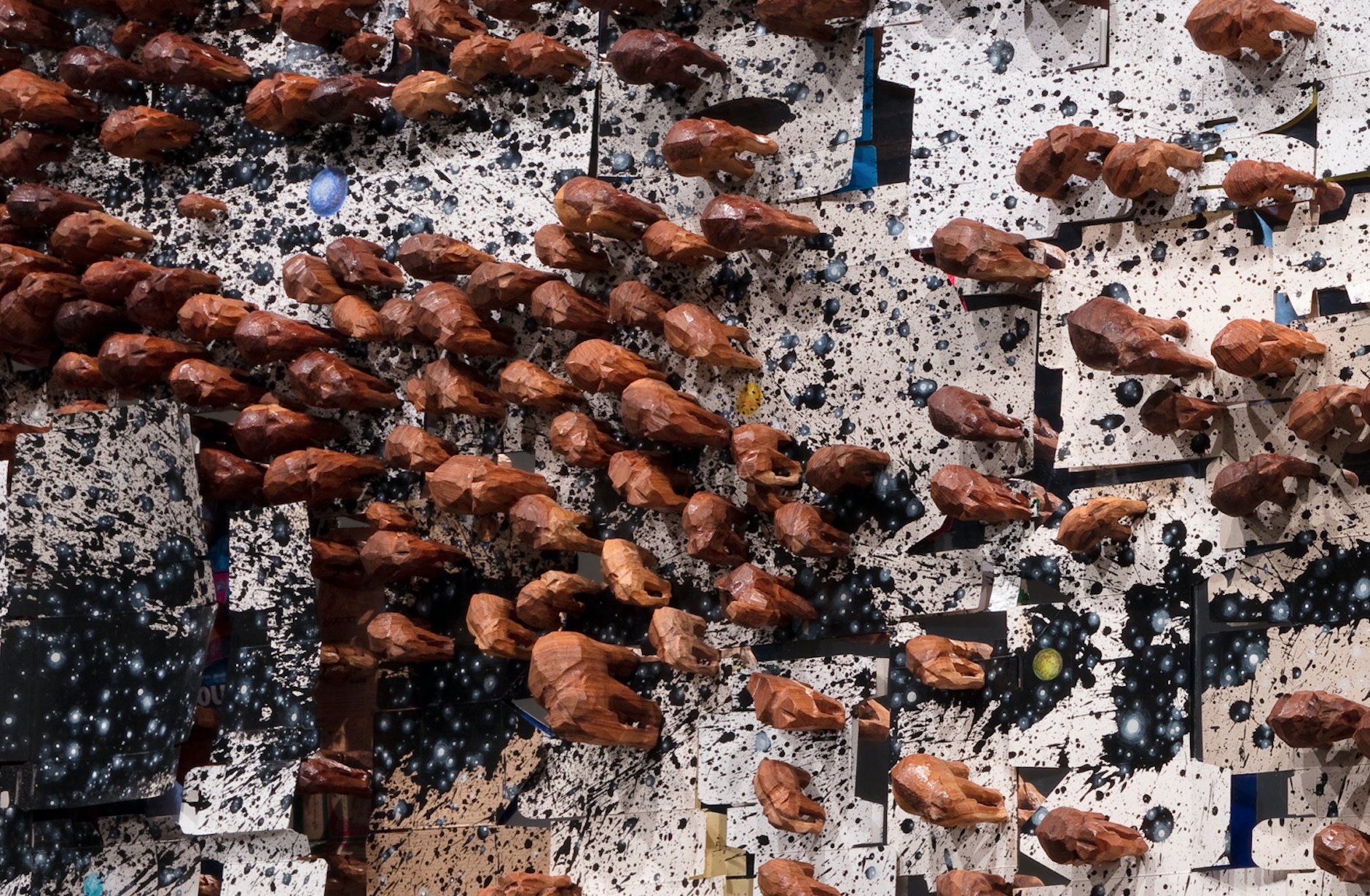
Interweaving local and global points of reference, Reclaiming the Inner Space underscores a sense of interconnectedness that characterises much of Harsha’s art. Here, the changing consumer habits, cultural customs and labour patterns of his local neighbourhood are aligned with broader socio-political narratives of modernisation, mass-production and our changing relationship to nature.
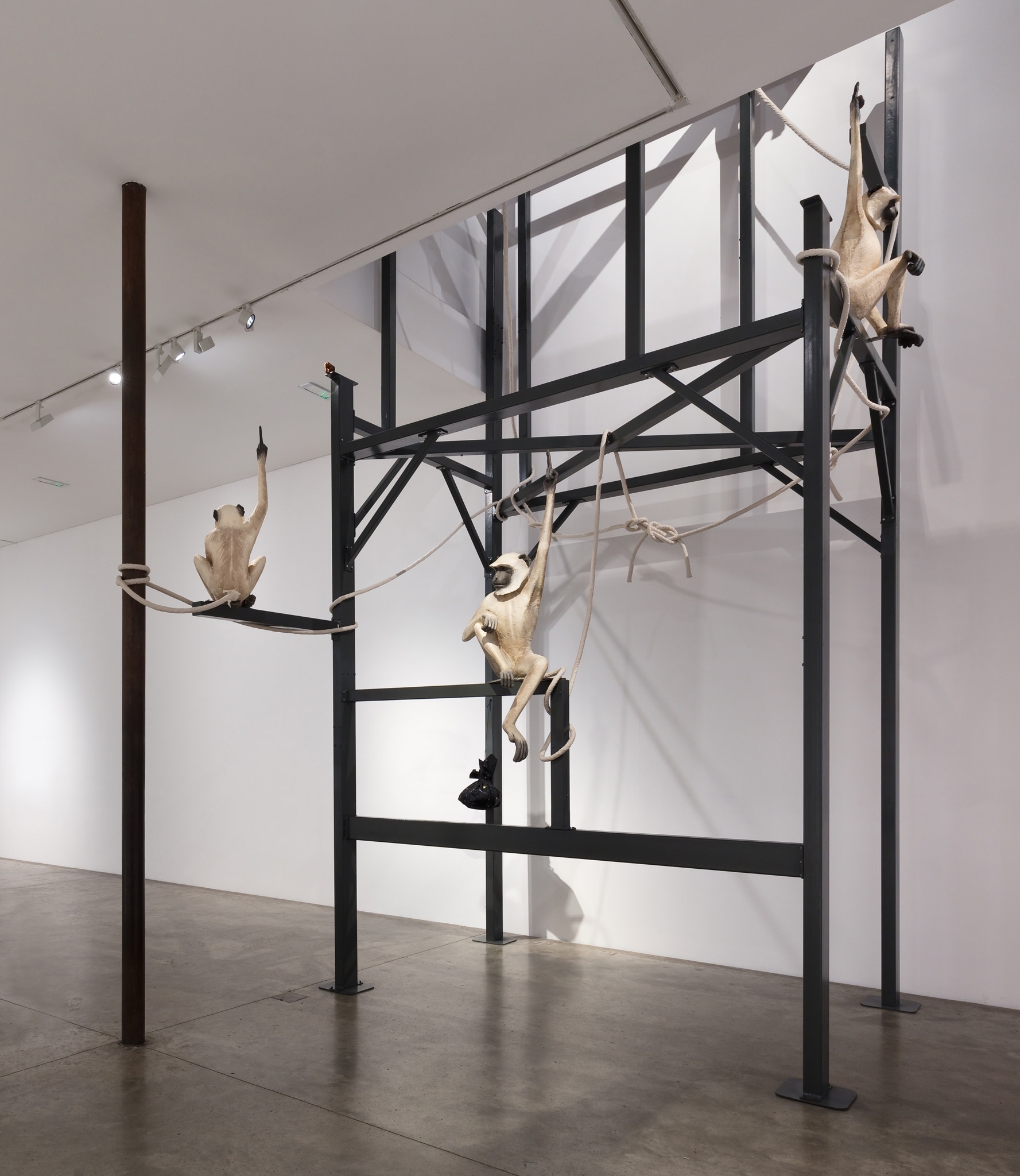
Further works on view included a new iteration of Tamasha, 2013 (pictured above), an installation of larger-than-lifesize monkeys that appear to scale a large scaffolding-like structure. The title of the work refers to the Marathi tradition of satirical theatre, performed widely by travelling groups in India. Taking various contemporary connotations of the word ‘Tamasha’ – which can refer to political upheaval or even human folly – Harsha casts his monkeys as simultaneously non-temporal and earth bound, pointing upwards to the heavens while their tails, intertwined, tether them inexorably to one another and the structure on which they perch. In this, Harsha also refers to the phenomenon of the rat king and its appearance in northern folkore traditions since the sixteenth century.
While storytelling endures at the heart of Harsha’s practice, linear narrative remains elusive in a number of exquisitely rendered paintings. Instead, through gentle humour and dreamlike grace, he makes quietly philosophical enquiries into the complex social, economic and cultural realities of contemporary life. In Warmth, 2019, the artist meditates on public spaces, and the ways in which individuals come together in various formations. Fascinated in particular with open circles, a form that allows people to enter and leave at will, becoming temporary points of focus, speakers or sages, he delineates a series of curving throngs, each focused around a different being or entity – including fire, a golden donkey, an astronaut, and the Hindu god Brahma.
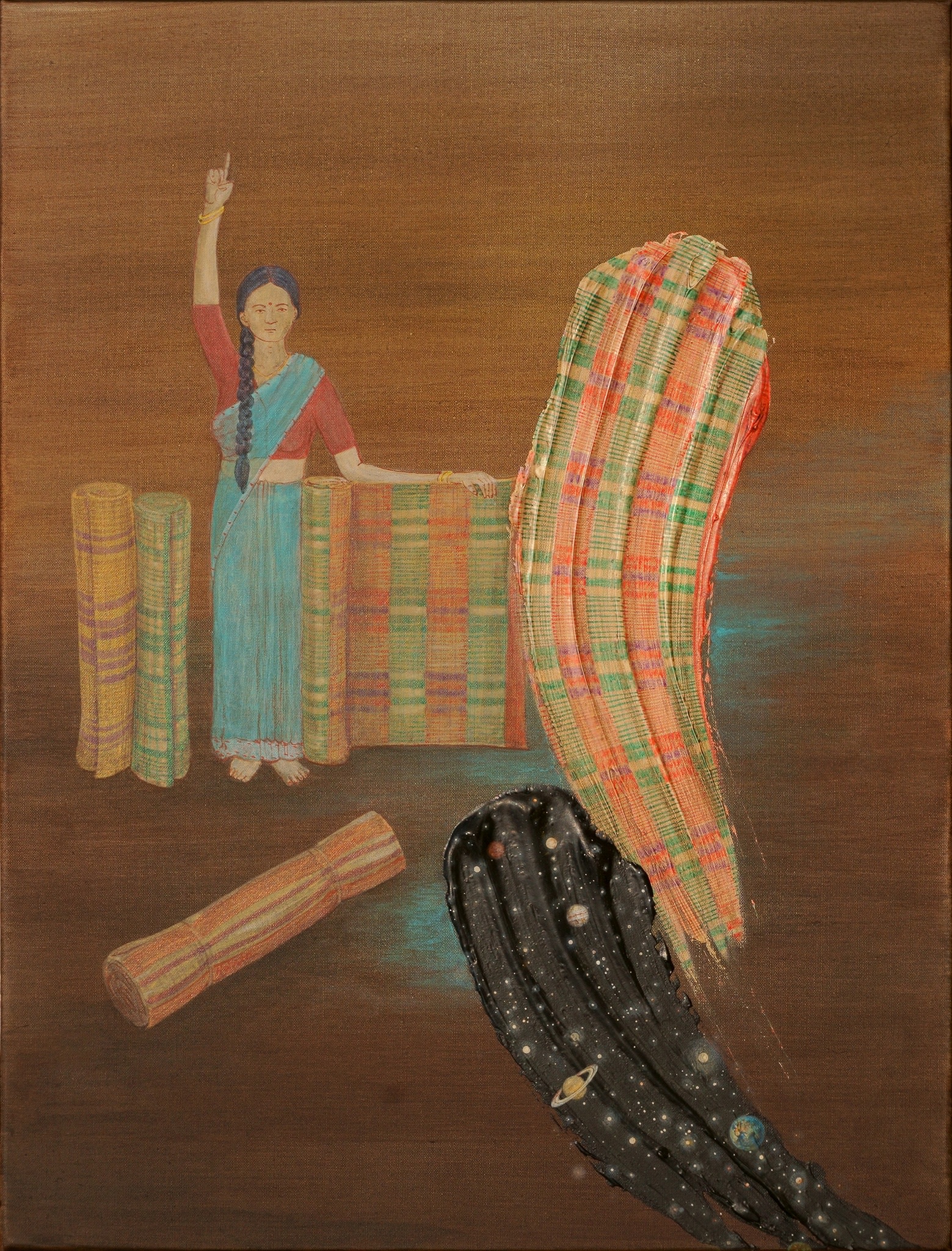
Central to these paintings is a gentle questioning of our place within the known and unknown worlds, the strength of our grip on the tangible and, conversely, the force with which the intangible exerts a hold over us. In Smears to weave her everyday, 2019 (pictured above), Harsha focuses on the mat sellers in his hometown of Mysore – businesses that have existed in the same place for generations. Taking as a starting point the familiarity of the mats and their cheerful colours and patterns, Harsha, who uses them to sleep on during the summer months, aligns the quotidian textiles of the marketplace with the fabric of the universe, in which the mysteries of the cosmos are wrapped.
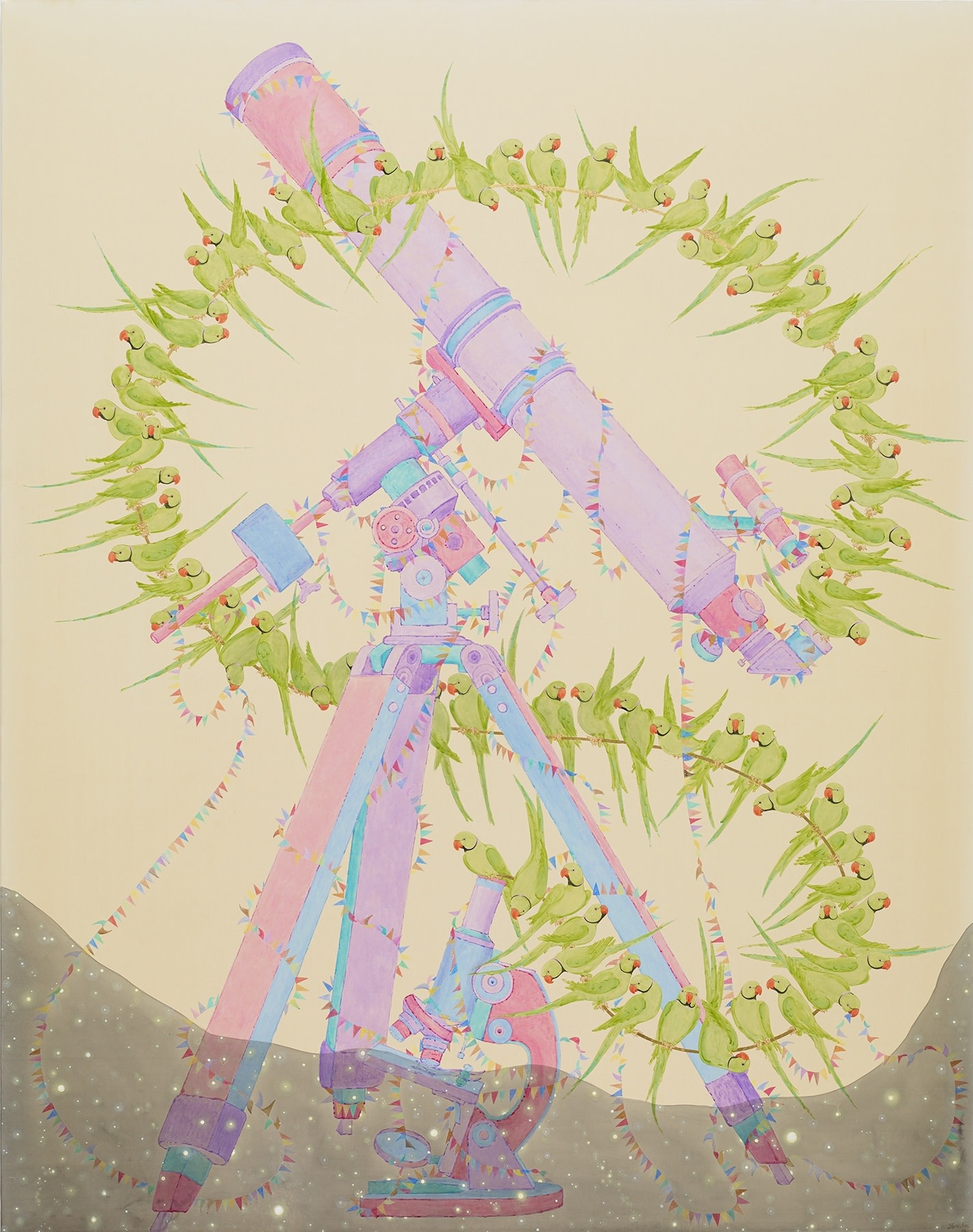
About NS Harsha
Drawing on a broad spectrum of Indian painting traditions and popular arts, as well as the western canon, NS Harsha creates quietly philosophical, luminous works that reflect on geopolitical order and our ever-more technologically mediated relationship with the world. In exquisitely rendered paintings, works on paper, wall and floor works, sculptures, site-specific installations and public projects, the Mysore-based artist examines structures, borders and barriers as a series of ever-shifting concepts, alluding to an interconnectedness that compels the viewer to consider their relationship to the art work as part of a wider conversation about systems of knowledge, belief and power.
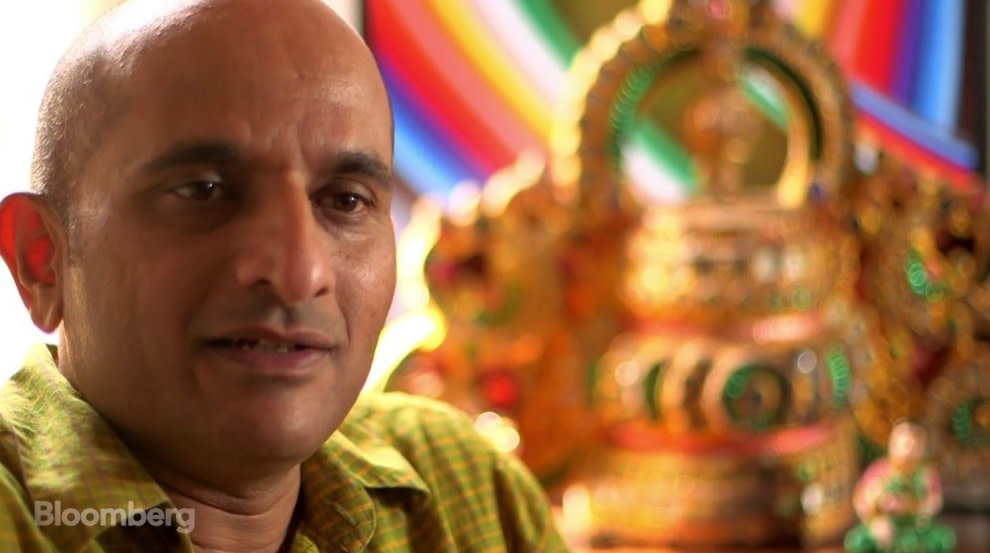
NS Harsha profiled on Bloomberg Brilliant Ideas
In this episode of Bloomberg's Brilliant Ideas series, the artist discusses his work and inspiration from his home and studio in Mysore, India.
Images from top:
144 x 468 in
16 7/8 x 13 in
74 3/4 x 59 1/8 x 1 3/8 in